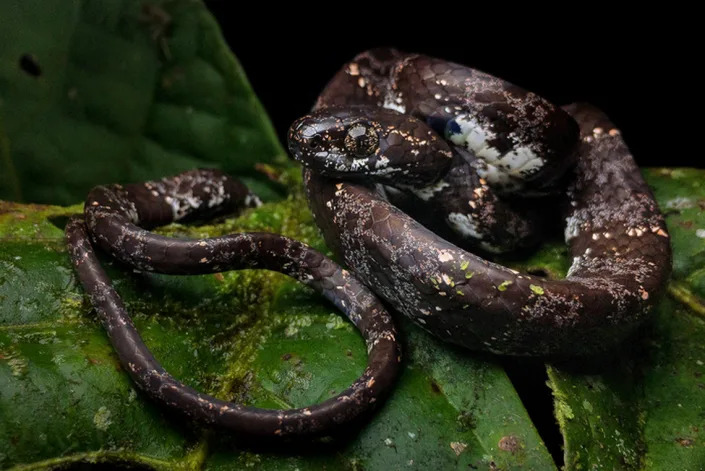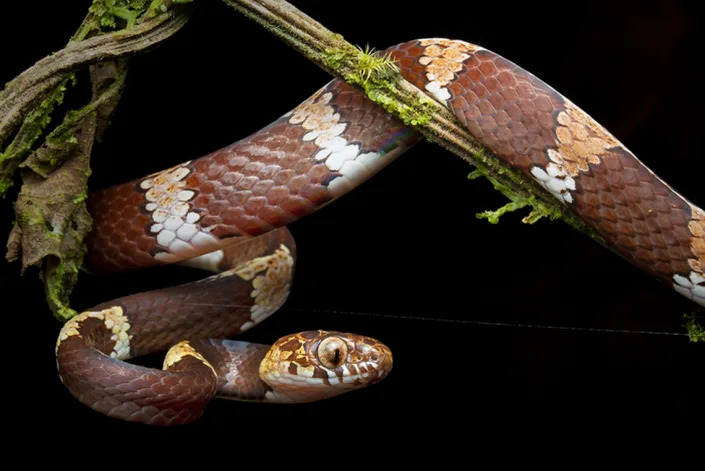Aspen Pflughoeft
Wed, February 8, 2023
Munching on snails and slithering along the jungle canopies of South America, several bright-eyed species of snakes went undetected — until now.
Scientists were surveying snakes in Colombia, Ecuador and Panama when they found several species they didn’t recognize, the researchers said in a study published Jan. 25. Further analysis confirmed their discovery of five new species of snail-eating, tree-dwelling snakes.
The new species — all of which have distinctive eye colors — are “drop-dead-gorgeous,” according to a Jan. 27 news release from EurekAlert.
One of the newly discovered species, Sibon irmelindicaprioae, or DiCaprio’s snail-eating snake, was named after actor and film producer Leonardo DiCaprio’s mother, Irmelin DiCaprio, the study said. DiCaprio’s publicist and producer did not immediately respond to McClatchy News’ request for comment.
The study said Leonardo DiCaprio is a “long-time advocate and supporter of biodiversity conservation around the world.” He and other conservationists chose the names for some of the snakes in honor of their loved ones, according to EurekAlert.
The 2-foot-long snake has bright orange eyes and bands of reddish-orange, white and brown, photos show. DiCaprio’s snail-eating snakes are “docile and never attempt to bite,” the study said. Instead, the snake defends itself by coiling its body around its head and emitting a “musky and distasteful odor.” The species was found in the jungles of Panama and Colombia.
Scientists also discovered a species named Sibon canopy, or the canopy snail-eating snake, per the study. This species had vibrant blood-red eyes and a matching scale pattern of deep red, white and green patches, photos show. The species has only been found in Panama.

The Sibon canopy snake also known as canopy snail-eating snake.
Another of the newfound species was named Sibon marleyae, or Marley’s snail-eating snake, researchers said. The snake was named after Marley Sheth, the daughter of “long-time supporters of biodiversity conservation,” per the study.
Marley’s snail-eating snakes have burnt-orange eyes, a charcoal-colored tongue and a speckled scale pattern of maroon, orange, yellow and white, photos show. The species has been found in Ecuador and Colombia. Similarly to DiCaprio’s snail-eating snakes, this species is also docile and emits a foul odor when threatened.
The fourth species scientists discovered is Sibon vieirai, or Vieira’s snail-eating snake, the study said. Just over 2 feet long, these snakes have brown eyes and a matching scale pattern of deep browns, speckled with white and green, photos show.
Vieira’s snail-eating snakes are more active at night and during rainfall, the study said. The species is found in Ecuador and Colombia.

The Sibon vieirai snake, also known as Vieira’s snail-eating snake.
Researchers also discovered Dipsas welborni, or Welborn’s snail-eating snake, per the study. Also about 2 feet long, the snakes have tannish brown eyes and striped scale patterns of white and various shades of brown and copper, photos show.
When threatened, the species flattens itself, attempts to form a triangular shape with its head and emits a foul smell, scientists said.

The Dipsas welborni snake, also known as the Welborn’s snail-eating snake.
All five snake species are threatened by legal and illegal mineral mining, researchers said in the EurekAlert news release. Open-pit mining operations destroy vegetation that these tree-dwelling species rely on to live and forage.
“These new species of snake are just the tip of the iceberg in terms of new species discoveries in this region,” Alejandro Arteaga, a biologist who conducted the research said in the release. “But if illegal mining continues at this rate, there may not be an opportunity to make any future discoveries.”
No comments:
Post a Comment